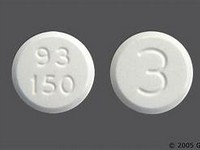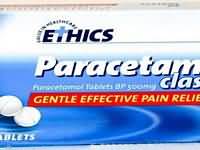moexipril hydrochloride

CLINICAL USE
Angiotensin-converting enzyme inhibitor:HypertensionDOSE IN NORMAL RENAL FUNCTION
3.75–30 mg dailyPHARMACOKINETICS
DOSE IN RENAL IMPAIRMENT
GFR (mL/MIN)
20–40 Start with low dose and adjust according to responseDOSE IN PATIENTS UNDERGOING RENAL REPLACEMENT THERAPIES
IMPORTANT DRUG INTERACTIONS
Potentially hazardous interactions with other drugsADMINISTRATION
Reconstition
–Route
OralRate of Administration
–Comments
–OTHER INFORMATION
Moexipril is a prodrug that is converted to an active metabolite, moexiprilatClose monitoring of renal function during therapy is necessary in those with renal insufficiencyRenal failure has been reported in association with ACE inhibitors, mainly in patients with severe congestive heart failure, renal artery stenosis, or post renal transplantHigh incidence of anaphylactoid reactions has been reported in patients dialysed with high-flux polyacrylonitrile membranes and treated concomitantly with an ACE inhibitor. This combination should therefore be avoidedHyperkalaemia and other side effects are more common in patients with impaired renal functionMoexipril hydrochloride.
See how to identify renal failure stages according to GFR calculation
See how to diagnose irreversible renal disease
Home








